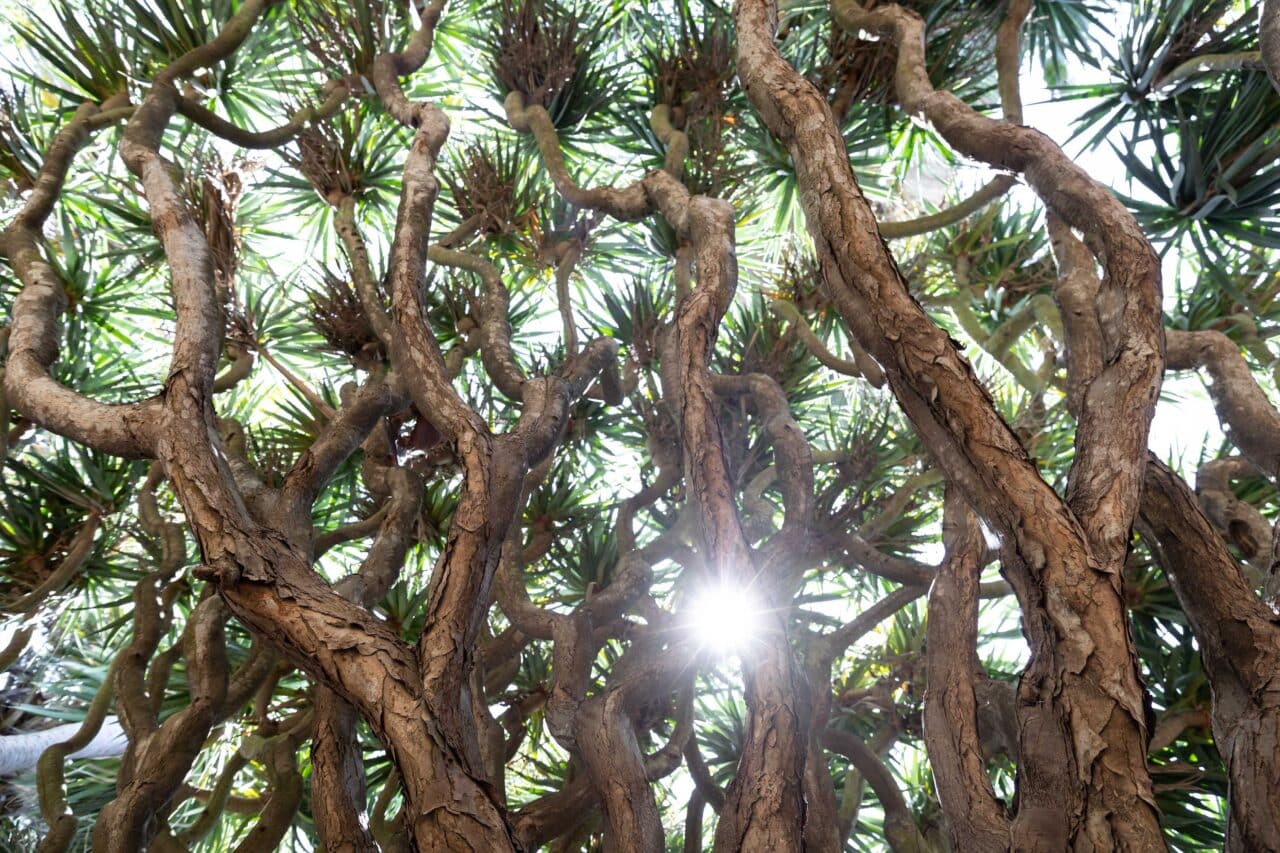Dracaena Circle
Dragon trees are native to the Canary Islands, Cape Verde Islands, Madeira and, in a recent discovery, limited stands in western Morocco
Dracaena Circle
Sixty-two miles west of Morocco, Africa, in the Atlantic Ocean are the nearest of the Canary Islands, where in 1402 the fantastical dragon tree (Dracaena draco) was first identified. Dragon trees are native to the Canary Islands, Cape Verde Islands, Madeira, and in a recent discovery, limited stands in western Morocco. Blood-red sap, often called “dragon’s blood” oozes from the tree when the bark is cut or bruised. This unusual plant in the asparagus family (Asparagaceae) has a distinctive growth pattern. Dragon trees typically grow for ten to fifteen years before flowering and then develop two or more branches where flowering has occurred.
the
Noteworthy
Features
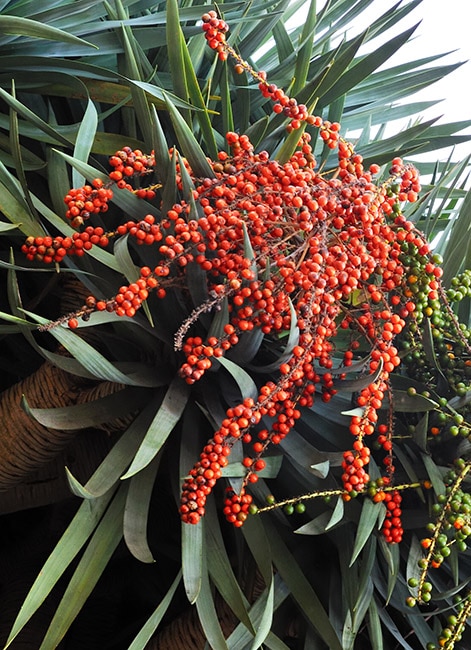
Seed Dispensers
The fleshy orange fruits of a dragon tree are about the size of a small marble, large enough to limit the pool of species that might germinate and disperse the seeds. Difficulty of dispersal, along with habitat loss in its native environment, has caused this tree to be considered endangered.
Dragon’s Blood
The dragon tree’s red sap was used by the original Guanche people of the Canary Islands in a mummification process. Dracaena resin was also used as a key ingredient for the varnish in Stradivari violins.
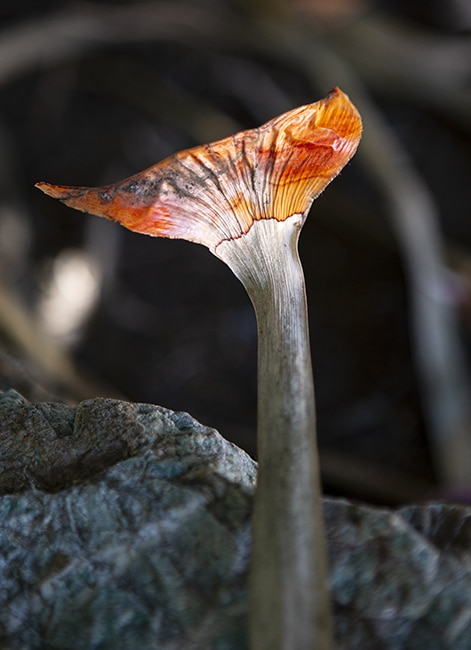
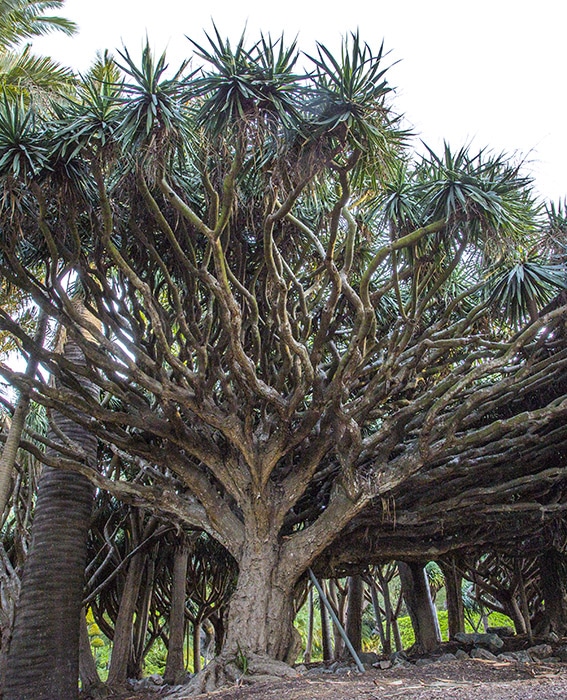
1890s Specimen
A tree in the Dracaena Circle dates back to Kinton Stevens’ nursery in the 1890s. Its thick trunk and crown of spreading, multiple-branched limbs are found only in very old plants of this extremely slow-growing species. A dragon tree’s age can best be estimated by the number of times it has branched, calculating ten years for every two branches.
Aerial roots
Follow the branch of a larger tree to spot the downward reaching growth. These unusual features are aerial roots. A unique process to the modern-day plant kingdom, these roots can allow a dragon tree branch to eventually break off and grow into its own specimen.
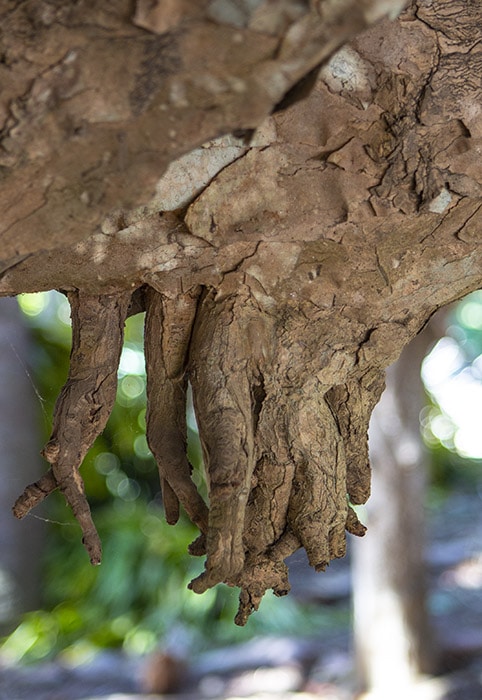
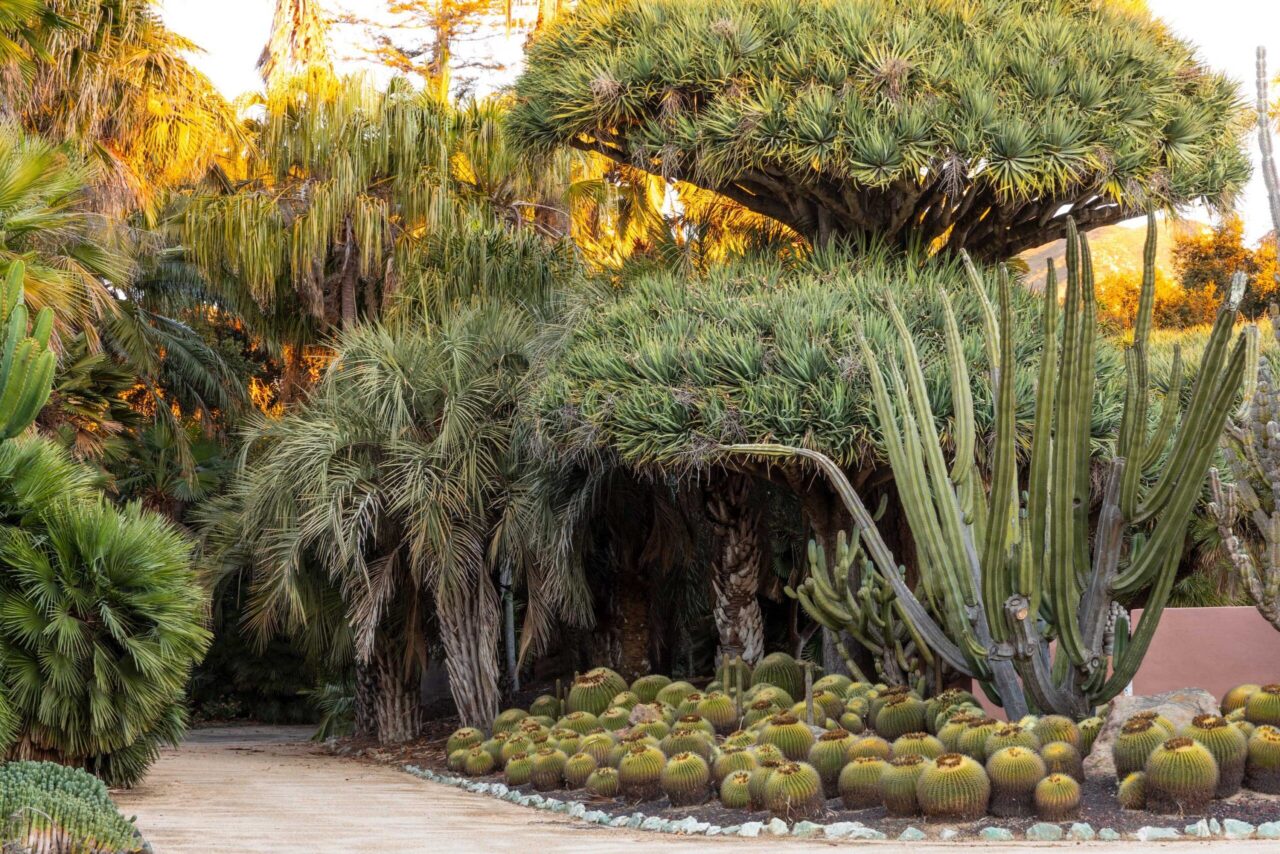
Notable Species
Dracaena draco (dragon tree), Jubaea chilensis (Chilean wine palm), Phoenix canariensis (Canary Island date palm), Aeonium arboreum ‘Zwartkop’
Did You Know?
This part of the garden was Kinton Stevens’ demonstration nursery in the late 1800s and many of the large palm trees in the vicinity date back to this time.
